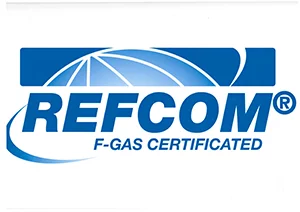Founded in 1918 by Konosuke Matsushita, Panasonic has undergone many advancements and innovations to get where it is today. Starting off as a manufacturer of electric lamp sockets and plugs, the company was incorporated in 1935 and began rapidly growing in the electric product line industry. Panasonic now manufactures a variety of electric goods including televisions, home entertainment, beauty care products, cooking appliances and air conditioning systems.

Panasonic’s History
With a desire to create high-value products, this infamous brand started off with only three hardworking, dedicated staff members who then grew in the Matsushita Electric Housewares Manufacturing Works. This location was transformed into a workshop, with hand-operated pressing systems and insulator plates. The staff were on a mission to produce high-quality household items as they noticed a huge gap in the market for convenient, durable electrical fixtures. The products produced were widely popular, allowing the company to grow by the end of 1918, employing 20 people.
Timeline of Panasonic
In February 1920, the first Panasonic trademark was created, the letter M, overlaid with an arrow to represent reaching targets and overcoming obstacles. After this, the company simply grew and grew and by the end of 1922, it had a large leased factory, office space, more than 50 employees and become its very own full-fledges business.
In 1927, Panasonic moved into the world of electrothermal production which were typical products that most households could not afford. The company had the vision to create equipment which was affordable yet still met its high standards of quality. Panasonic introduced radios, irons, electric foot warmers and thermostats.
In the 1950s, customers saw the creation of transistor radios, television, tape recorders, stereos, and large household appliances. During the next decade, Panasonic added microwave ovens, air conditioners and automation equipment, all of which are available worldwide.
The Panasonic name
First introduced in 1955, the name Panasonic was originally used for a speaker in the export market, pan meaning universal and sonic meaning sound. The company realised this word was in line with their goal of bringing their sound to the world so in 2088, adopted it as their corporate brand.
The Panasonic brand also has a number of group brands including:
- Panasonic automotive
- Panasonic industry
- Panasonic connect
- Panasonic energy
Panasonics five principles
The Panasonic company policy is an integral part of the corporate culture, principles and worldwide philosophy. The brand aims to become a partner for companies in the B2B world and achieve full customer satisfaction through high-quality technology, products and services. All corporate ideals relate to quality, safety at work, security and the environment. The seven principles the company abide by include:
- Contribution to society
- Fairness and honesty
- Team spirit and cooperation
- Improvements and efforts
- Courtesy and humility
- Adaptability
- Gratitude

Lee Jackson Panasonic Air Conditioning
Panasonics’ first home cooler was manufactured in 1958 and since, has undergone many updates, advancements and technological advancements. The ranges that Panasonic includes Aquarea air to water, domestic air to air, commercial air to air, VRF system, chiller solutions, refrigeration and control systems.
With a reputation for providing intelligent, efficient solutions, Panasonic Air Conditioning is a popular choice for a range of applications.
At Lee Jackson Air Conditioning, we have a Panasonic Pro Partner accreditation, providing us with access to the full range of the manufacturer’s systems. This means that we can provide a bespoke solution to suit your specific needs including Panasonic wall units or cassettes.
We’ll install Panasonic air-con across Nottinghamshire, Derbyshire and Leicestershire so get in touch today.


